Free Downloads for SLPs, OTs, PTs, & Special Educators
Created by school-based therapists, these tools are designed to make your workday easier and more effective.

Classroom Modifications and Accommodations for School-Based Therapists
This 20-page handbook includes classroom modifications and accommodations for a variety of topics. It is intended to be a reference for school-based therapists, case managers, teachers, and parents. Supports for executive functioning, sensory processing, vision, speech sound disorders, language processing, and more! It's a must-have for anyone working in the school setting.
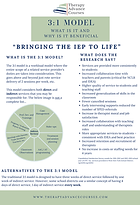
3:1 Model: How to Get Started and Implement it in Your School
This guide outlines how to begin implementing the 3:1 Service Delivery Model in your school and/or district. Learn how to get started and how we implement it in our district. We've also included a sample letter to share with your teachers and staff, as well as additional resources for further research.

Childhood Apraxia of Speech vs. Severe Phonological Disorder
When evaluating a child with suspected CAS, a differential diagnosis is essential to providing the most effective intervention. It's important to remember that no single characteristic has been found to clearly distinguish children with CAS from children with other speech sound disorders. This free download outlines the differences in CAS and phonological disorders to guide you in your assessment.
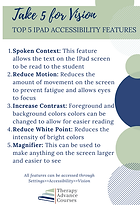.png)
Take 5 for Vision
This free download is a must have for any school-based OT. It includes:
-
Top 5 iPad Accessibility Features
-
Top 5 No Equipment Exercises
-
Top 5 Apps to Work on Visual Processing Skills

The Hierarchy of Language Processing
Have you ever heard of the Hierarchy for Language Processing? The idea is that all language skills build on one another, and an individual must have a solid foundation before they can understand and use a higher-level skill. If you feel lost in your goal writing or lesson planning and have been picking tasks at random, this framework will guide you in creating more structure for your therapy.
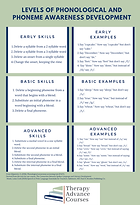
Levels of Phonological and Phoneme Awareness Development
This free download outlines the early, basic, and advanced levels of phonological and phoneme awareness, according to the PAST, or the Phonological Awareness Screening Test (Kilpatrick, 2016). It includes an example for each skill. If you're looking to learn more about phonological awareness and related activities, start here!
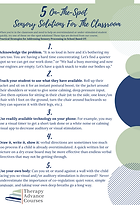
5 On-The-Go Sensory Solutions
When you're in the classroom and need to help an overstimulated or under-stimulated student quickly, try one of these on-the-spot solutions!
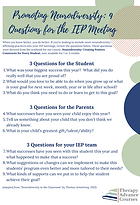.png)
Promoting Neurodiversity: 9 Questions for the IEP Meeting
When you know better, you do better. If you're looking to include more neurodivergent-affirming practices into your IEP meetings, review the questions here.
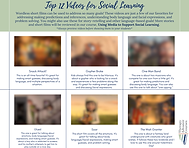
Top 12 Videos for Social Learning
Wordless short films can be used to address so many therapy goals! These videos are just a few of our favorites for making predictions and inferences, understanding body language and facial expressions, and problem solving. You might also use these for story-retelling and other language-based goals! Even more stories and short films are reviewed in our course, Supporting Social and Emotional Learning with Media
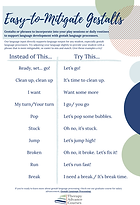
Easy-to-Mitigate Gestalts
Need gestalts or phrases to incorporate into your play sessions or daily routines to support language development with gestalt language processors? We've got you covered!
.png)
Debunking 7 Myths About Dyslexia and Dysgraphia
It’s time to debunk seven of the most common myths related to dyslexia and dysgraphia.
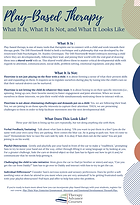.png)
Play-Based Therapy: What It Is, What It Is Not, and What It Looks Like
Share this handout with parents, graduate students, teachers, and colleagues to spread the word about play-based therapy including what it is, what it is not, and what it looks like. We outline specific ideas for what to do when your child or student is lining up cars and highlight some of the key principles derived from the DIRFloortime® Model.

Stages of Natural Language Acquisition
Share this handout with parents, graduate students, teachers, and colleagues to spread the word about Natural Language Acquisition. Use this as a guide to support the language development of your gestalt language processors.
.png)
Repetitive Line Books for CAS
This free download includes 6 picture book titles and the accompanying repetitive line that you can use with each one. Download this for yourself and share with families!
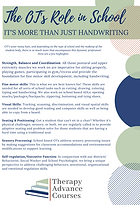
The Occupational Therapist's Role in School
This free download outlines some of the key roles and responsibilities of the school-based OT. OTs wear many hats, and depending on the type of school and the makeup of the student body, there is so much more that encompasses this dynamic profession!
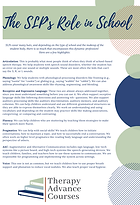
The Speech-Language Pathologist's Role in School
This free download outlines some of the key roles and responsibilities of the school-based SLP. SLPs wear many hats. and depending on the type of school and the makeup of the student body, there is so much that encompasses this dynamic profession!

How to Write a Strong Social Story™
This free download outlines the key ingredients for writing a strong Social Story™. Based on Carol Gray’s original “recipe,” it breaks down each sentence type and offers helpful tips to support your students’ social and emotional growth at school or home.
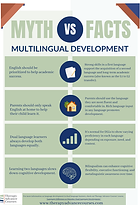
Myths vs. Facts: Multilingual Language Development
There are a lot of misunderstandings about how children learn more than one language. This handout breaks down 8 common myths about multi-language development and replaces them with facts that help educators and families better support multilingual learners. Perfect for sharing with teams or using in parent meetings! Even more language learning insights are shared in our course, Language Difference or Disorder: Dual Language Development.


